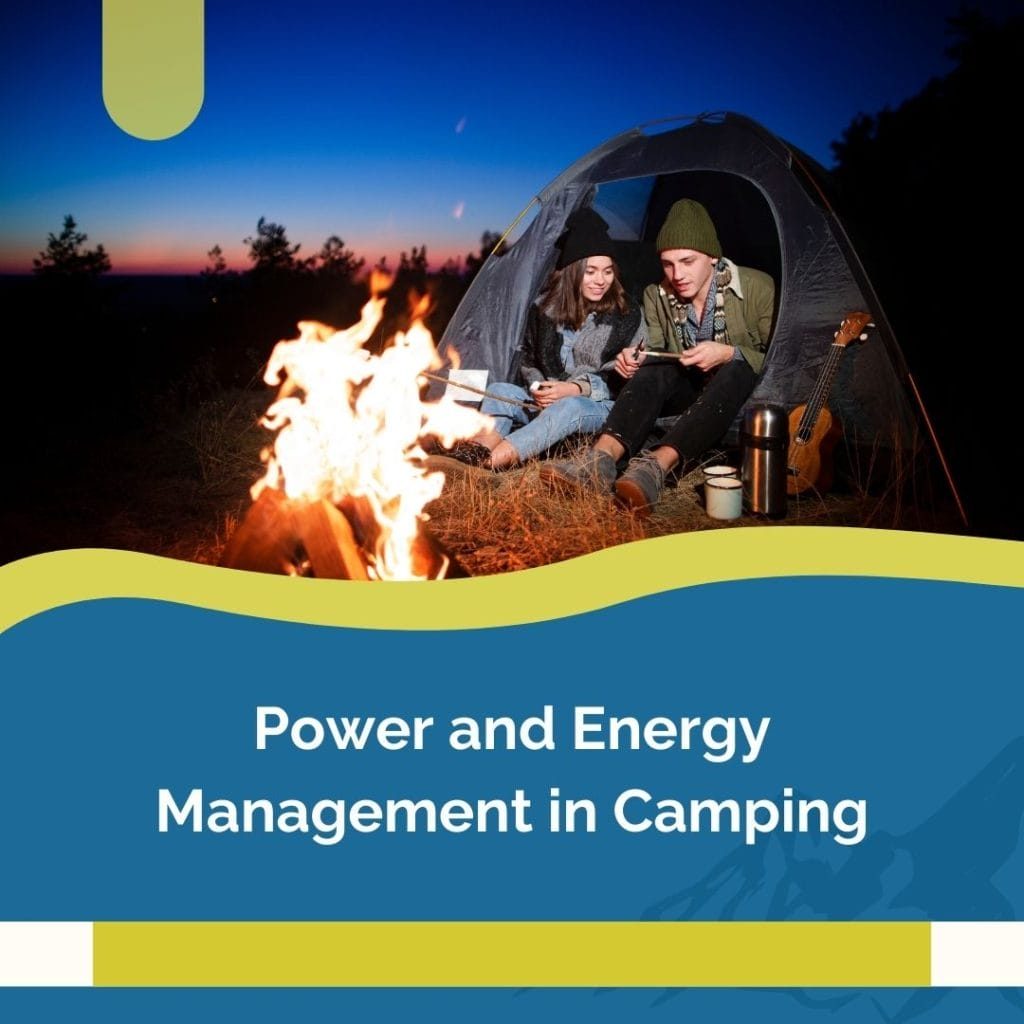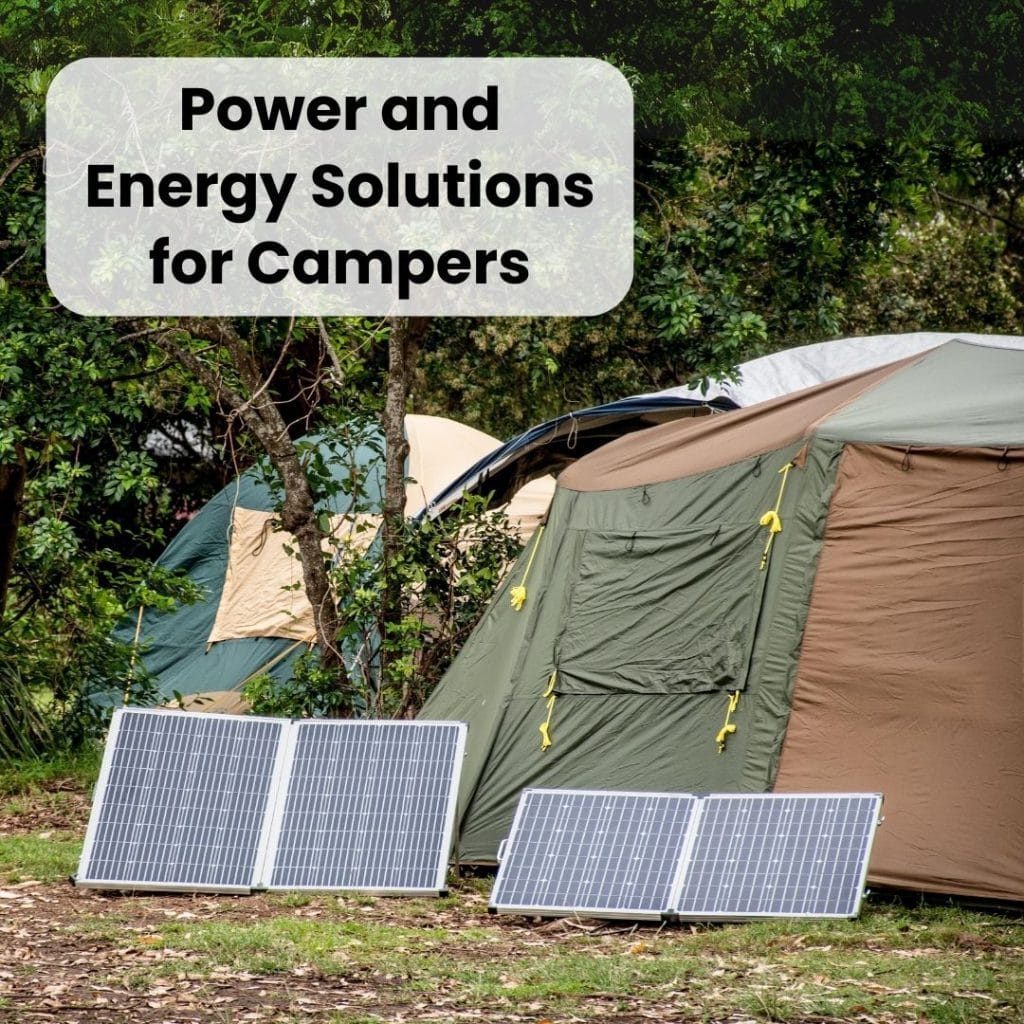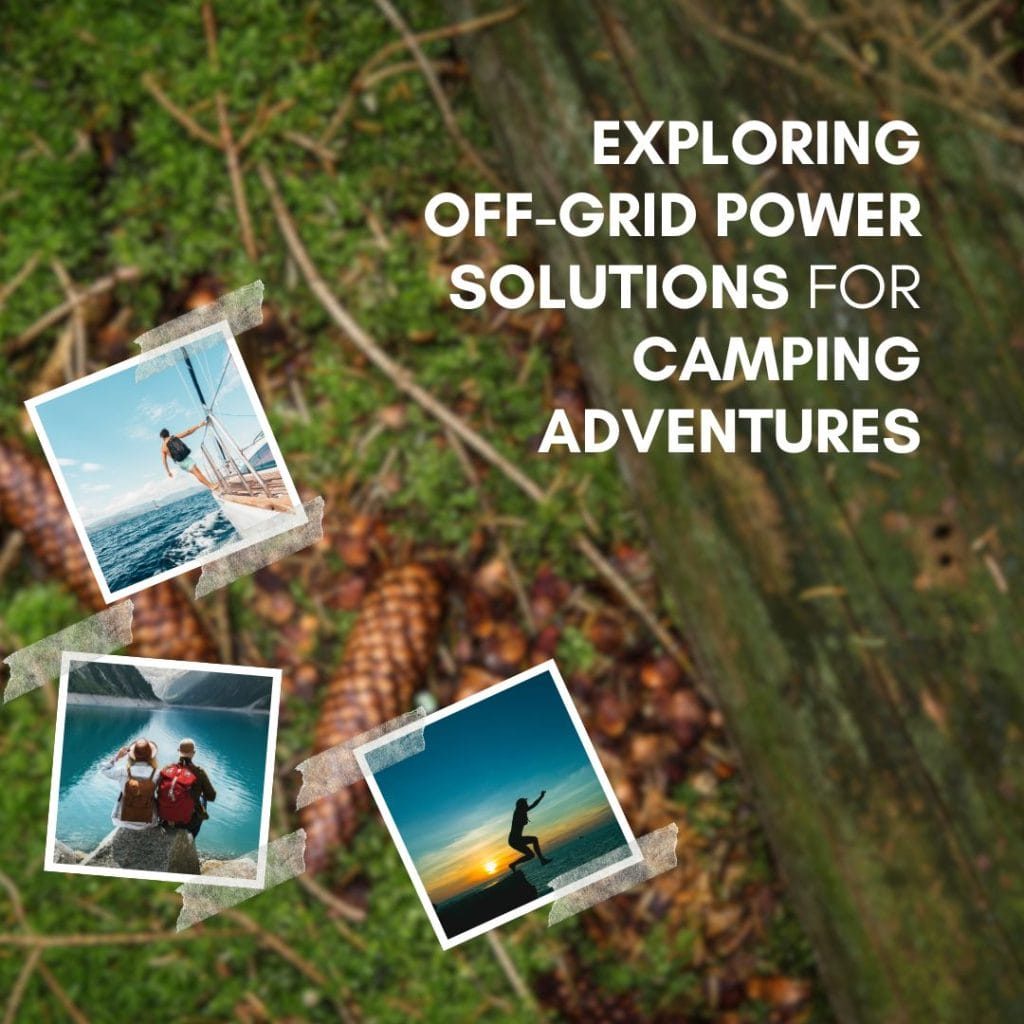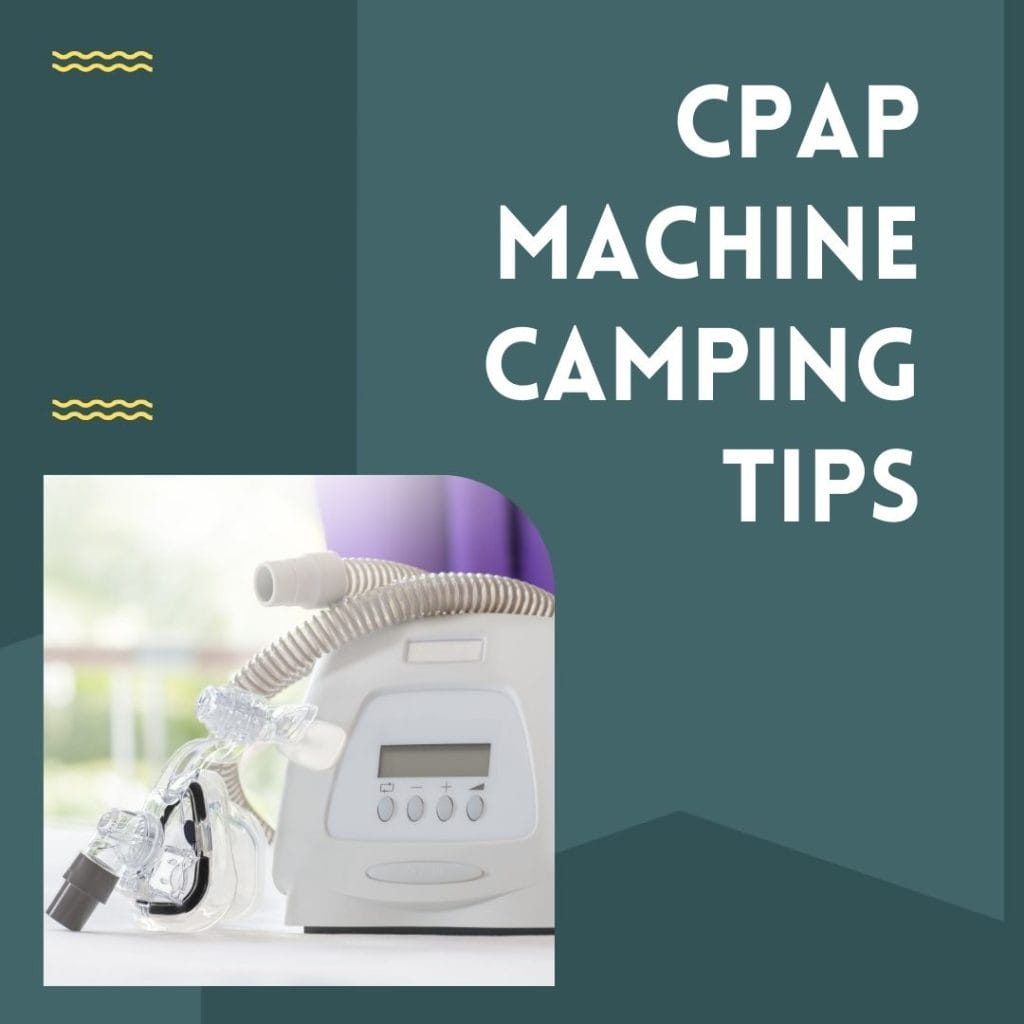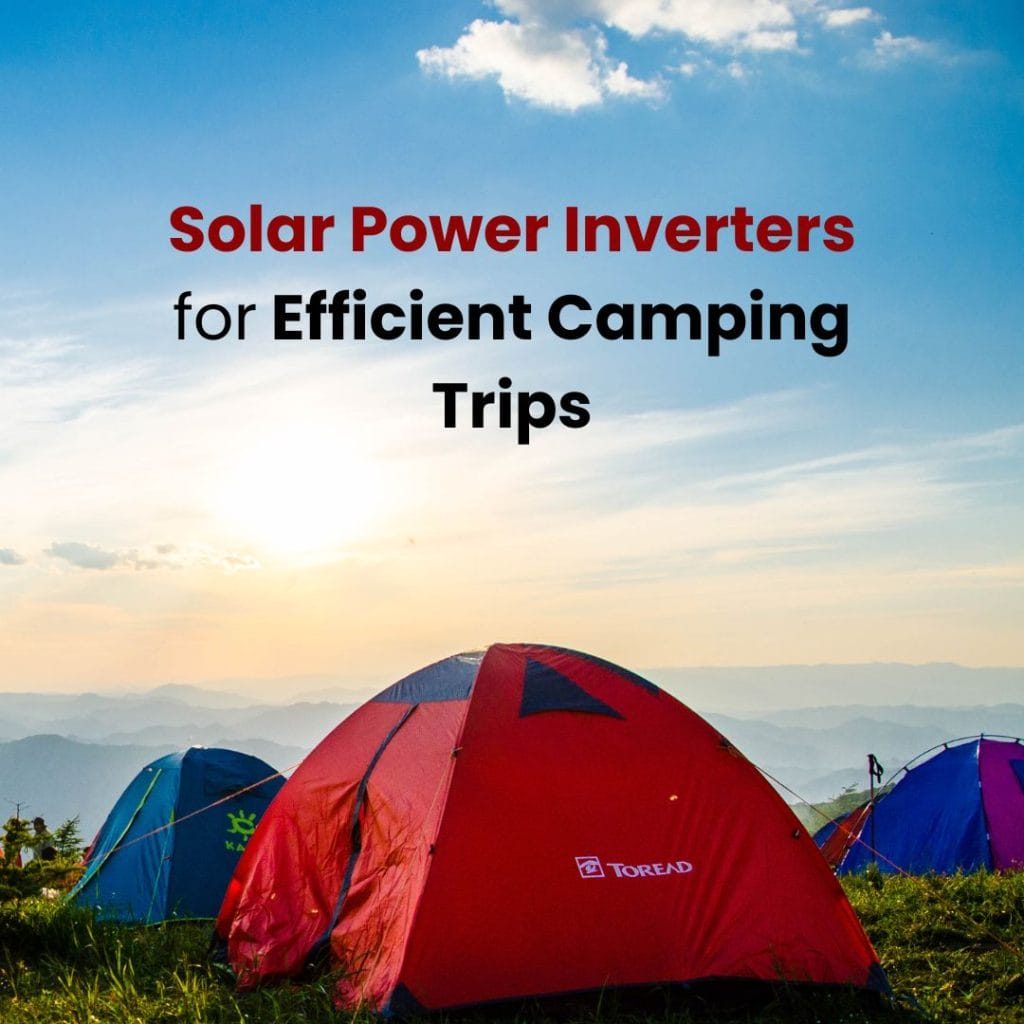When it comes to camping, comfort and convenience are paramount. A key piece of equipment that can ensure both is a power inverter. As such, this guide will explore the important “Camping Power Inverter Features” that you should consider when looking to enhance your outdoor experience. Understanding these features ensures you select the right power inverter for your specific camping needs.
Key Features to Look for in a Power Inverter for Camping
When it comes to choosing the perfect power inverter for camping, there are several key features you should look for to ensure it meets your camping needs.
Inverter
An inverter is a device that changes direct current (DC) into alternating current (AC), which is typically used for powering appliances. Both inverters and inverter/chargers can take stored energy from batteries and convert it into usable power. However, the feature that distinguishes inverter/chargers from regular inverters is their capability to connect to AC sources.
Inverter/chargers can recharge your camping batteries from an AC power source when available. They automatically switch to battery power if the AC source is interrupted, providing a seamless power supply. This is particularly useful for camping situations where you may have access to shore power or a generator intermittently.
On the other hand, inverters that do not have this charging feature require running vehicles to recharge the batteries. They are unable to connect directly to AC sources. This means you will need to have your vehicle running to recharge your batteries, which may not be the most convenient or fuel-efficient solution during a camping trip.
Input Voltage
The input voltage of a power inverter is a crucial aspect to consider in terms of compatibility with your batteries. Many inverters typically operate with 12V batteries – a common standard in the market.
However, in the realm of heavy-duty power inverters, you may find models capable of utilizing higher voltage batteries, such as 24V, 36V, or 48V ones. These are particularly designed for applications requiring substantial wattage.
While choosing your inverter, it’s essential to ensure compatibility between the inverter’s input voltage and the batteries. Misalignment can result in power inefficiencies or even equipment damage. Therefore, understanding your power needs and ensuring that your batteries match your inverter’s requirements is key to a successful camping power setup.
Output Voltage
The output voltage is another critical factor to consider for your camping power inverter. In North America, the standard electric service operates on 120V AC power. As such, it’s important to choose a power inverter that is compatible with this voltage standard.
If you plan to power electronics, power tools, or small appliances while camping, these devices will likely expect 120V AC input. Having an inverter that matches this specification greatly simplifies your power setup and ensures that your devices can operate safely and effectively.
Choosing an inverter with a different output voltage could result in inadequate power supply or potentially damaging your devices. Therefore, for those camping in North America, a power inverter compatible with 120V service is crucial.
Continuous Output Rating
The continuous output rating of a power inverter refers to the maximum wattage it can supply without interruption. This is an essential feature to consider, as it must exceed the total wattage required by all the devices you plan to connect simultaneously.
For instance, if you’re powering a 60W light bulb and a 100W laptop at the same time, your inverter needs a continuous output rating of at least 160W. If your inverter’s continuous output rating is lower than the total power draw of your devices, it could lead to power interruptions or even damage the inverter.
Input Connection
When considering the input connection of a power inverter, it’s crucial to distinguish between different types of inverters. Small, portable inverters usually plug directly into a vehicle’s 12V receptacle, offering a simple, straightforward connection process.
However, when it comes to heavy-duty inverters, the connection process is slightly different. Heavy-duty inverters come equipped with DC input terminals. These terminals are designed to connect directly to batteries, creating a secure, reliable connection.
It’s important to note that for these heavy-duty inverters, the connection cables are typically supplied by the user. This gives users the flexibility to select cable lengths and types that best suit their specific camping setup.
Understanding these distinctions between portable and heavy-duty inverters can help ensure you select the right inverter for your camping power needs and are prepared for the connection process.
Peak vs. Continuous Power
Power inverters should be equipped to manage short-lived power surges that often occur during the startup or operation of many appliances, tools, and pump systems. These power surges, also known as peak power, can be significantly higher than the steady-state or continuous power demands of these devices.
Inverters designed to handle such peak power requirements can deliver up to 200% of their continuous power rating for a brief period. For example, an inverter rated at 500W continuous power should ideally be able to deliver up to 1000W to accommodate any power surges.
The ability to meet peak power demands is crucial to prevent potential damage to both the inverter and the appliances connected to it. Therefore, when choosing an inverter for your camping needs, ensure it has an adequate peak power rating, alongside the continuous power rating. This will ensure a smooth and reliable power supply for all your camping power needs.
Outlet Requirements
The number of outlets on a power inverter is another salient feature to consider. It should align with the number of devices you plan to power simultaneously during your camping trip. If you intend to charge multiple devices at once, an inverter with numerous outlets would be more suitable.
In addition, if your camping trips often take you to wet or humid environments, consider investing in a power inverter equipped with Ground Fault Circuit Interrupter (GFCI) outlets. GFCI outlets are designed to shut off electric power when they detect an imbalance between incoming and outgoing current. This can provide an extra layer of protection against electric shock, particularly in damp environments. Ensuring that your power inverter has the right number and type of outlets for your needs can make your camping experience safe and convenient.
Runtime
The runtime of your power inverter ultimately depends on the power capacity of your battery and the total load of the devices connected. If the inverter is solely relying on battery power, the larger the battery capacity, the longer your inverter can sustain power.
However, the load your devices draw also impacts the runtime. High-powered appliances consume more energy, thereby draining the battery faster. For instance, a fridge or a heater, being high-consumption devices, will significantly reduce your inverter’s runtime compared to lower-power devices such as charging a phone or operating LED lights.
Understanding and planning for these factors can help you choose a power inverter and battery setup that ensures sufficient runtime for your needs during your camping trip. It’s always prudent to calculate your power needs accurately and add a buffer to account for unexpected power drains or extended usage.
Cooling Fans
Cooling fans are an essential feature to consider when selecting a camping power inverter. As power inverters convert DC power to AC, they produce heat. This heat, if not properly managed, can lead to overheating and ultimately damage the inverter.
Multi-speed cooling fans are particularly beneficial as they adjust their speed to the load being drawn from the inverter. During periods of high load, the fans spin faster, effectively dissipating the heat generated. Conversely, during low load periods, the fans decelerate, thereby conserving power. This adaptability not only prevents heat buildup but also extends the service life of the inverter. Therefore, an inverter with multi-speed cooling fans is a wise investment for any camper.
Stage Charging
Advanced inverters such as the Eaton Inverter/Chargers employ a 3-stage charging system, designed for speedy battery recharge and long-term battery maintenance.
The first stage is the ‘Bulk’ stage, where the battery is charged at the maximum current until it reaches near full capacity.
The second stage, ‘Absorption’, reduces the charging current to prevent overcharging, allowing the battery to safely reach its fully charged state.
The final ‘Float’ stage maintains the full charge, supplying a small, safe current to counteract potential self-discharge.
This intelligent system maximizes battery lifespan, prevents overcharging, and ensures swift power restoration. This feature makes such inverters a reliable companion for camping adventures.
Resettable Circuit Breakers
Resettable circuit breakers are an important safety feature to consider in a camping power inverter. They serve as a first line of defense against overload damage.
When an overload or short circuit occurs, these breakers interrupt the electrical flow, protecting the inverter and any connected devices from damage. Instead of needing to replace a fuse, as with traditional models, you can simply reset the breaker and resume operation.
This feature not only enhances the safety of your setup but also offers convenience, saving you from potential charger failures and the need for constant fuse replacements. Therefore, when selecting your camping power inverter, prioritizing this feature is a wise decision.
Special Features
When purchasing a camping power inverter, consider whether you require these special features to power your equipment safely and efficiently:
- USB Ports: Useful for easy charging of mobile devices such as phones, tablets, and fitness trackers.
- Pure Sine Wave Output: Essential for powering variable-speed power tools and sensitive electronics including computers, network devices, and audio/video equipment.
- GFCI Outlets: These outlets meet OSHA requirements and are suitable for use in wet or humid environments, such as near sinks.
- Hospital-Grade Outlets: UL certified for use in patient care areas.
- Remote Control Capability: Some inverters provide an RJ45 communication port that enables connection of an optional remote control module.
- Status LEDs: These indicators provide information on battery levels, low-battery warnings, load levels, overload warnings, system faults, and operation modes.
- Configuration DIP Switches: These allow customization of high and low voltage auto transfer to suit your application.
- High Initial Power: Supports peak surge demands of devices with high initial power requirements, like motors, compressors, and pumps.
These features can significantly enhance the performance and convenience of your camping power inverter.
Frequently Asked Questions
What distinguishes an inverter from an Uninterrupted Power Supply (UPS)?
Inverters and UPS systems both draw power from batteries when AC power is absent. However, a UPS unit usually integrates the battery and battery charger into a single device, and the batteries for inverters are typically provided by the user. A UPS is able to communicate with the devices it powers, providing standby notifications, shutdown warnings, or communicating with a human operator. Inverters generally lack this feature. While inverters respond to power outages in 4.2 to 16.7 milliseconds, a UPS responds in a fraction of that time, making it better suited for applications that must stay powered, like computer networking equipment.
How does an inverter differ from a generator?
Generators produce electricity by combusting gasoline, diesel fuel, or propane. In contrast, inverters convert DC power stored in batteries to AC power required for running devices. For extended periods requiring large amounts of power, a generator may be a better choice. However, an inverter/charger is quieter, does not emit fumes, and thus is more suitable for residential or indoor use. An inverter/charger can also work in tandem with a generator, allowing you to conserve fuel by shutting off the generator without turning off your equipment.
What is an inverter/charger?
An inverter/charger changes DC power (from batteries) to AC power, which is then supplied to the connected equipment. When linked to an AC power source, it continually charges the connected batteries. During a power outage, the inverter/charger automatically transitions to battery power to supply the connected equipment. The batteries are recharged once the AC power source is restored.
How can I use an inverter for basic home emergency backup power?
Most often, emergency home backup power runs off a standard car battery, essentially turning your car into a generator. The car should be kept running while the inverter is in use to prevent the battery from becoming depleted. The inverter can still be used if the car is off, but this is not recommended for prolonged periods. If you do use the inverter without the engine running, start your car up every hour and let it run for about 10 minutes to recharge the battery. To create an emergency backup system without a vehicle, you can hook up two 12V car batteries to one inverter. That will provide enough power to run the average household refrigerator for up to two days, depending on the size of the batteries and the size of your fridge. It’s a smart idea to have a spare battery or two on hand in case the duration of the power failure exceeds your battery runtime.
Can I power my home using my car and a power inverter?
Absolutely! First, know the total wattage of the appliances you need to keep running using the guidelines given below. This will help you buy the right inverter for your home emergency backup system. An inverter is not waterproof, so keep it out of the rain, as well as away from dust and direct sunlight. Although you can connect the inverter to the vehicle’s battery using jumper cables and alligator clips, the preferred method is with a ring terminal that fits securely over the inverter post. Then connect an extension cord no more than 200 ft. from the inverter to the appliance(s) you want to run. Beyond this distance, you are likely to experience signal loss. To keep the battery charged, you should run your car for about 10 minutes every hour. The inverter will still work when the car is off, as long as you have not depleted the battery.
Does an inverter offer surge protection?
Yes. The AC output of an inverter is conditioned before it reaches your equipment since an inverter converts DC power to AC power. It gives a stable output voltage and frequency shielding your equipment from power surges and line noise interference, helping your equipment to operate at its optimum.
Can a refrigerator or freezer be powered by an inverter?
Yes, but a crucial factor to bear in mind is that refrigerators and freezers draw a high surge of power when they cycle on, quite a few times the wattage they require when running continuously. Your inverter must be able to handle this peak surge. As a general rule, make sure your inverter can accommodate a peak surge of 500-750W for a refrigerator and 500-1000W for a chest freezer.
What type of battery is recommended for use with my inverter?
Commonly, 12V batteries like those found in cars are used to power inverters. There are also heavy-duty inverter/chargers that use 24V, 36V or 48V batteries for applications
Conclusion
In conclusion, understanding the key features of a camping power inverter is integral for optimizing your outdoor experience. With the right inverter, you can enjoy the conveniences of modern technology while staying attuned to nature’s tranquility. Whether you’re seeking quiet power sources or prioritizing surge protection, selecting the right camping power inverter features can elevate your camping escapades to new heights. Choose wisely and enjoy the best of both worlds.

